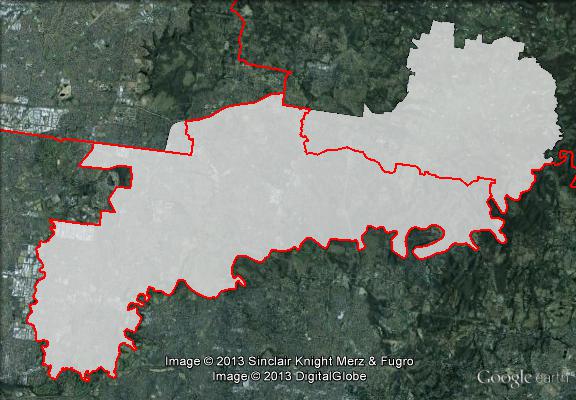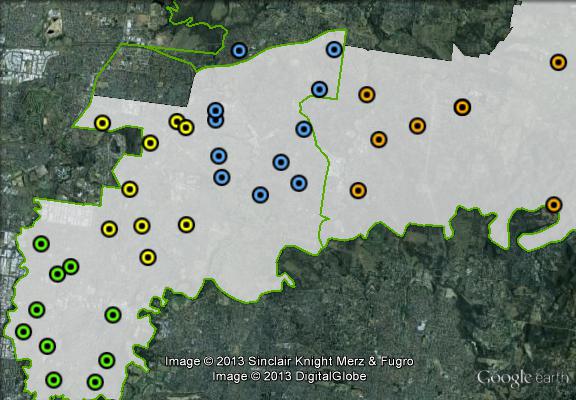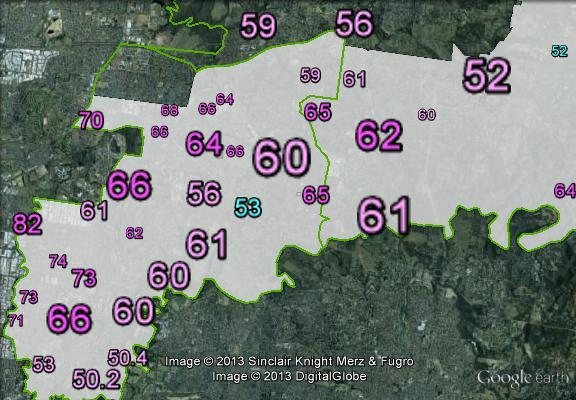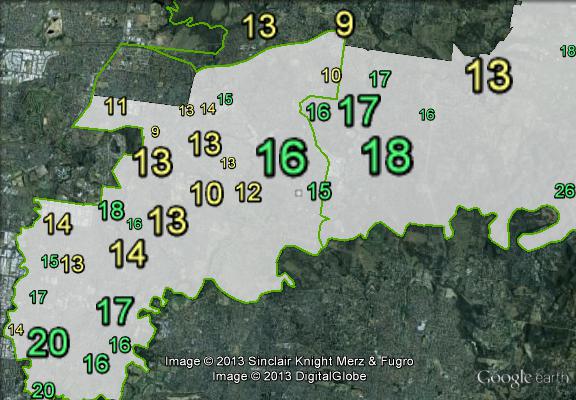ALP 11.2%
Incumbent MP
Jenny Macklin, since 1996.

Geography
North-eastern suburbs of Melbourne. Jagajaga covers most of Banyule council area and southern parts of Nillumbik council area. Key suburbs include Ivanhoe, Heidelberg, Eaglemont, Rosanna, Viewbank, Yallambie, Montmorency, Eltham, St Helena and Warrandyte.
Redistribution
Jagajaga has expanded since the 2010 election, gaining a small area around Greensborough from Scullin and a larger area around Kangaroo Ground from McEwen. The Labor margin was cut from 11.5% to 11.2%.
History
Jagajaga was created for the expansion of the House of Representatives in 1984, and has always been held by the ALP.
Jagajaga was first won in 1984 by Peter Staples, who had previously won the seat of Diamond Valley at the 1983 election, before it was abolished in 1984.
Staples was appointed as a junior minister after the 1987 election, and served until a reshuffle in 1993, and served as a backbencher until his retirement at the 1996 election.
Jagajaga was won in 1996 by Jenny Macklin. Macklin served as a shadow minister for the entirety of the Howard government. She was Deputy Leader from the 2001 election until 2006, when she was defeated by Julia Gillard when Kevin Rudd defeated Kim Beazley for the party’s leadership. She has served as Minister for Families, Housing, Community Services and Indigenous Affairs since the election of the Rudd government in 2007.
Candidates
- Nick Wallis (Sex Party)
- Tahlia Eadie (Family First)
- Jenny Macklin (Labor)
- Kitten Snape (Palmer United Party)
- Chris Kearney (Greens)
- Nick McGowan (Liberal)
Assessment
Jagajaga is a safe Labor seat.
2010 result
| Candidate | Party | Votes | % | Swing |
| Jenny Macklin | ALP | 40,682 | 47.34 | -0.82 |
| Joh Bauch | LIB | 29,742 | 34.61 | -2.94 |
| Chris Kearney | GRN | 12,847 | 14.95 | +4.70 |
| Joe Sgarlata | FF | 2,109 | 2.45 | +0.09 |
| Peter Harris | SEC | 560 | 0.65 | +0.65 |
2010 two-candidate-preferred result
| Candidate | Party | Votes | % | Swing |
| Jenny Macklin | ALP | 52,868 | 61.52 | +2.54 |
| Joh Bauch | LIB | 33,075 | 38.48 | -2.54 |

Booth breakdown
Booths have been divided into four areas. Those polling places in Nillumbik council area have been grouped as ‘east’. Polling places in Banyule council area have been divided into East Central, West and West Central.
The ALP won a majority in all four areas, varying from 58.8% in the east to 64.7% in the west.
The Greens vote varied from 13.2% in East Central to 17.4% in East.
| Voter group | GRN % | ALP 2PP % | Total votes | % of ordinary votes |
| East Central | 13.17 | 59.54 | 20,065 | 29.70 |
| West | 16.56 | 64.73 | 17,121 | 25.34 |
| West Central | 13.49 | 63.74 | 16,335 | 24.18 |
| East | 17.42 | 58.80 | 14,045 | 20.79 |
| Other votes | 14.71 | 59.37 | 22,516 |




http://www.electionleaflets.org.au/leaflets/1199/
Very soft-lefty pamphlet from the Lib candidate. Interesting approach.
Smart due to the Labors popularity in Jagajaga. Though this probably looks soft to many Liberal voters, i know i was a bit surprised when i saw it.
Can anyone explain why the Liberal Party sent, via Australia Post at taxpayers expense, voting information for a Liberal candidate that was not standing in this electorate? I received mail urging me to vote for Jag Chuga in the adjacent electorate of Scullin (and I am nowhere near the boundaries) … waste of money again!
Do you have any evidence that it was at taxpayers expense?
Article on the LIB candidate in JJ, http://www.crikey.com.au/2013/08/14/the-school-of-hard-door-knocks-for-a-lib-in-labor-land/
Labor retain with a final margin around 5-6%.
Very large swing here, any reason why?
Although looking at the median incomes here….it probably shouldn’t be a safe Labor seat, particularly given how far north it is.
East-west Link?!
Nillumbik is very green minded and also very well off for an outer suburban municipality,
This was a suprise from my perspective, I expected Jenny to hold on with at least a 5% margin, but to be only 2% would’ve given Labor a real scare. If she chooses to retire in the near future, Jagajaga could be in play. Another seat in Melbourne where Labor was outpolled on primary votes. A trend that is dangerous if repeated at a by-election.